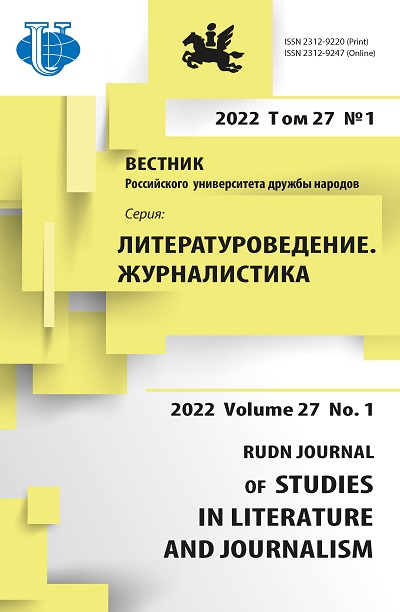Трансформация художественных образов прошлого в современной китайской детской литературе
- Авторы: Петрова С.А.1, Сю Х.1
-
Учреждения:
- Российский университет дружбы народов (РУДН)
- Выпуск: Том 27, № 1 (2022)
- Страницы: 94-101
- Раздел: Литературоведение
- URL: https://journals.rudn.ru/literary-criticism/article/view/30723
- DOI: https://doi.org/10.22363/2312-9220-2022-27-1-94-101
Цитировать
Полный текст
Аннотация
Актуальность статьи обусловлена кардинальными изменениями, которые происходят в современной Китайской Народной Республике, в представлениях о той роли, которую должен играть ребенок в китайском обществе. Новизна и научная ценность предложенного исследования заключается в контент-анализе ряда китайских литературных источников, который ранее не проводился. Сегодня в научной среде развернулась активная полемика между теми, кто утверждает, что идет европеизация азиатской культуры и ее трансформация вопреки древним философским воззрениям, и теми, кто отстаивает положение о сохранении ее национальных культурных ценностей в противовес глобализации. Авторы, основываясь на юнгианском анализе художественных образов, предлагают рассмотреть несколько архетипов прошлого, которые используются литераторами в современной китайской детской литературе. Они приходят к выводу о том, что отличительной особенностью архетипичных образов детской китайской литературы является их положительное движение от конфуцианских и неоконфуцианских представлений к современным воззрениям при неизбежном регрессе в период маоизма, однако на протяжении всей истории существования детской литературы идет сохранение базовых архетипов, присущих древним легендам и мифам, как европейским, так и азиатским.
Об авторах
Светлана Анатольевна Петрова
Российский университет дружбы народов (РУДН)
Email: petrova_sa@pfur.ru
ORCID iD: 0000-0003-1358-2655
кандидат филологических наук, преподаватель кафедры массовых коммуникаций
Российская Федерация, 117198, Москва, ул. Миклухо-Маклая, 6Хунлин Сю
Российский университет дружбы народов (РУДН)
Автор, ответственный за переписку.
Email: petrova_sa@pfur.ru
ORCID iD: 0000-0003-4615-1704
магистрант отделения журналистики
Российская Федерация, 117198, Москва, ул. Миклухо-Маклая, 6Список литературы
- Алексеев В. М. Китайская литература. М.: Наука, 1978.
- Белоусов С. Р. Конфуцианство и модернизация Китая // Проблемы Дальнего Востока. 1989. № 5. С. 79-84.
- Исаева Н. С. Мир детства в художественном пространстве ранней прозы Мо Яня // Актуальные проблемы гуманитарных и естественных наук. 2013. № 11-2. С. 29-34.
- Переломов Л.С. Конфуцианство и легизм в политической истории Китая. М.: Текст, 1981.
- Сун Мувэнь. Нэчжа покоряет морского дракона. Гуанчжоу: Наньфан, 2016.
- Цзэн Сюнь. Юэ Фэй: верно служить отечеству. Пекин: Небо, 2011.
- Юань Кэ. Древняя китайская мифология. Пекин: Хуасиа, 2013.
- Юнг К.Г. О психической энергии // Структура и динамика психического. М.: Когито-Центр, 2008. С. 48-82.
















